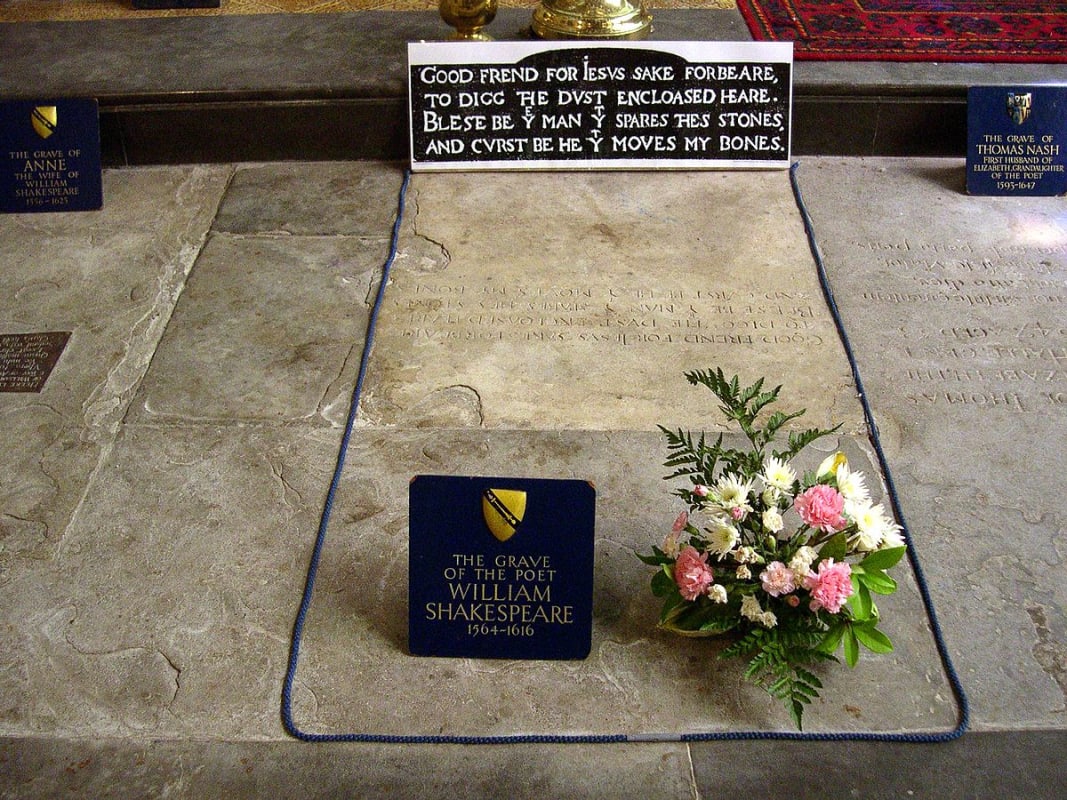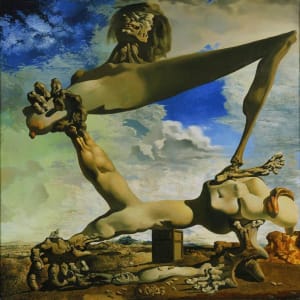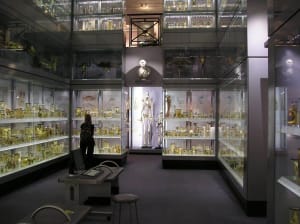
Of all the possible ghosts to be haunted by, William Shakespeare would have to be one of the worst. With an epic collection of ye-olde insults (Shakespeare pioneered ‘your mum’ jokes, by the way) and an aptitude for lengthy monologues, the Bard would definitely find a way to make you very, very sorry.
It’s perhaps for that very reason that scientists examining William Shakespeare’s grave in 2016 were very careful not to disturb his rest. After all, the Shakespeare grave curse is perhaps the most famous in the world. It’s even written on the Bard’s tombstone, to really spell things out for would-be plunderers.
And yet … it seems someone has ignored it.
What is written on Shakespeare’s grave?
A quatrain made up of iambic tetrameter couplets, the curse on Shakespeare’s grave is as follows:
“Good friend for Jesus’ sake forbeare,
To dig the dust enclosed here.
Blessed be the man that spares these stones,
And cursed be he that moves my bones.”
Brrr! Spooky. But not actually that unusual.
In Shakespeare’s day, it wasn’t uncommon for graves to be dug up and the bones moved to make room for new burials. Perhaps concerned about starring in a re-enactment of the ‘Yorick’ scene from Hamlet, Shakespeare (as the story goes) penned the verse above to prevent anyone from disturbing his rest.
And up until 2016, it seemed as though the curse had done its job. Keen to respect Shakespeare’s wishes themselves, the scientists even used radar technology to take a gander at his grave, leaving his bones untouched.
But they made a shocking discovery: Shakespeare’s skull was apparently missing.
Who risked William Shakespeare’s grave curse?
We say ‘shocking’ — but there have been rumours about someone plundering the Bard’s grave over the years.
So, who was it? A story in Argosy magazine from 1879 may have the answer. The rambling account from ‘A Warwickshire Man’ lays the crime at the door of a young doctor named Frank Chambers. “A wild, rather dashing young fellow,” Chambers supposedly stole the skull with three accomplices in 1794.
The 17th and 18th centuries saw a lot of body snatching. The heads of famous thinkers were of particular interest to scientific minds of the day. But it seems Shakespeare’s skull was too hot to sell. Unable to find a buyer, Chambers attempted to return it, only to have the skull spirited away by a lackey.
The account ends with the fate of Shakespeare’s skull unknown.
Where is Shakespeare’s skull now?
It’s still a mystery. Rev. Patrick Taylor of Holy Trinity told reporters that he was “not convinced” that the skull had actually been taken in the first place. And it’s true that the 2016 scan of Shakespeare’s grave wasn’t entirely conclusive.
Without actually digging Shakespeare up, we’ll never know for certain — but would you risk the curse?
Shakespeare’s grave location
If you’d like to visit the grave of William Shakespeare, it can be found in the Church of the Holy Trinity in Stratford-Upon-Avon. Entrance is free, but do check the church’s opening times before you go.









